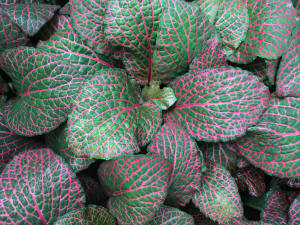|
 Colorful
Houseplants for Lower Light Locations Colorful
Houseplants for Lower Light Locations
By Melinda Myers
 Send a link to a friend
Send a link to a friend
[February 15, 2025]
Take your indoor garden to the next level. Include
some colorful houseplants for some added interest throughout the
year. Even those with low to moderate light in their homes can boost
the color of their indoor gardens.
Philodendron has long been a favorite houseplant
for low light situations. Update your collection with the bright
chartreuse leaves of the trailing Lemon Lime philodendron or upright
Pink Princess with splashes and streaks of pink on its dark green
leaves. |
|
 Philodendron
has long been a favorite houseplant for low light situations. Update
your collection with the bright chartreuse leaves of the trailing
Lemon Lime philodendron or upright Pink Princess with splashes and
streaks of pink on its dark green leaves. Philodendron
has long been a favorite houseplant for low light situations. Update
your collection with the bright chartreuse leaves of the trailing
Lemon Lime philodendron or upright Pink Princess with splashes and
streaks of pink on its dark green leaves.
Chinese Evergreens (Aglaonema) are a good choice for gardeners who
prefer low-light plants that tolerate drier soil. You can find
Chinese evergreens with a variety of colorful leaf patterns. Siam
Red has broad leaves with red edges, Red Valentine offers green
leaves with pink and red blotches, and the white markings on its
green leaves inspired Split Milk’s name.
Nerve plants (Fittonia) on the other hand prefer consistently moist
well-drained soil to keep their green leaves with pink, purple, red,
or white variegated leaves looking their best. Regular trimming will
help this plant look its best and starting new plants from these
trimmings will keep your plant collection filled with these colorful
but often short-lived plants.
Reduce maintenance and increase success with this and other
houseplants by amending the potting mix with an organic and
sustainable soil additive like Wild Valley Farms wool pellets (wildvalleyfarms.com).
Research found this amendment holds 20% of its weight in water and
slowly releases it into the soil when needed, helping keep the soil
consistently moist but not soggy wet.
Prayer plants, including the Marantas and Calatheas, can be a bit
more challenging but their unique foliage that folds up like praying
hands at night makes them well worth the effort. These plants prefer
moderate indirect light and can scorch in direct sunlight or pale
when the light is insufficient. Like nerve plants, they prefer
consistently moist soil and high humidity. Boost humidity by
grouping houseplants together and placing them on gravel trays. The
pebbles in the tray elevate the pots above the water kept in the
saucer. As the water evaporates, the humidity level increases around
the plant. Use rainwater or distilled water to avoid brown tips on
prayer plants, dracaenas, and spider plants caused by fluoride and
chlorine in tap water.
For those with a bit more light add a few spots of color with polka
dot plant (Hypoestes phyllostachya). You may have grown this plant
as an annual in your garden and containers, but it also performs
well as an indoor plant. Regular trimming of the green with white or
pink-dotted leaves keeps the plant full and compact.
[to top of second column] |

Peperomias prefer bright indirect light, but some
varieties will tolerate a bit less. Ripple Peperomia (Peperomia
caperata) adds texture and a bit of color while watermelon peperomia
(Peperomia argyreia) offers a nice contrast with its smooth leaves
colored like watermelon rind.
Dracaena plants offer a wide variety of textures with narrow and
broad leaves and various types and intensities of variegation.
Dorado’s leaves have thin yellow leaf edges, Lemon Lime’s green
leaves are highlighted with white stripes and chartreuse leaf
margins, and Limelight with its wide neon bright chartreuse leaves
are just a few of the many colorful dracaenas now available.
If the colorful leaves of any of these plants tend to pale or fade
to green you may need to increase the amount of light the plants
receive. Try moving them closer to an east- or west-facing window or
supplement those lowlight situations with artificial lights.
Consider these plants a piece of living art or a way to refresh your
indoor décor. Not only do they improve the view, but they also help
boost your mood, reduce stress, and improve focus when observing and
tending these and your other indoor plants.

Melinda Myers has written more than 20 gardening books,
including the Midwest Gardener’s Handbook, 2nd Edition and Small
Space Gardening. She hosts The Great Courses “How to Grow Anything”
instant video and DVD series and the nationally syndicated Melinda’s
Garden Moment TV & radio program. Myers is a columnist and
contributing editor for Birds & Blooms magazine and was commissioned
by Summit for her expertise to write this article. Myers’ website is www.MelindaMyers.com.
[Photo courtesy of MelindaMyers.com] |